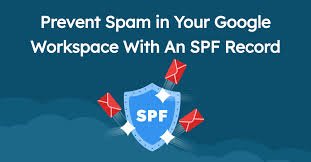Email problems can be a big headache, especially when messages go to spam or don’t show up at all. If you’re using Google Workspace and a third-party provider like Appriver, setting up your SPF record the right way is key. This simple setup helps your emails land where they belong—in the inbox. Let’s break it all down so you can avoid problems and keep your emails safe and sound.
Why SPF Records Matter for Email Safety
What Is an SPF Record?
An SPF record (Sender Policy Framework) is a line of text in your domain’s DNS settings. It tells email servers who is allowed to send emails on your domain’s behalf. If the server sending your email isn’t listed, the message could be marked as spam—or rejected.
How SPF Helps Google Workspace Users
When you use Google Workspace, it already has an SPF record that lets Google’s mail servers send your emails. But if you’re also using another service, like Appriver, you need to update the record. If you don’t, your messages could be blocked or flagged.
What Goes Wrong Without the Right SPF Setup
Problem: Emails Going to Spam
One of the most common issues is when your clients or team members say, “I didn’t get your email.” Often, that’s because the SPF record wasn’t set to include all your email sources.
Problem: Email Spoofing and Security Risks
Without proper SPF settings, your domain becomes vulnerable. Hackers can pretend to send emails from your address—this is called spoofing. It can hurt your reputation and confuse your contacts.
How to Add Appriver to Your Google Workspace SPF Record
Step 1: Check Your Current SPF Record
Go to your DNS manager and look for a text record (TXT) that starts with:
iniCopyEditv=spf1
If you’re only using Google Workspace, it might look like this:
iniCopyEditv=spf1 include:_spf.google.com ~all
Step 2: Get the Appriver SPF Include Value
For Appriver to work with your SPF record, you need their official “include” value. This often looks something like:
makefileCopyEditinclude:spf.protection.outlook.com
(Check Appriver’s support for the latest version.)
Step 3: Combine Both SPF Entries
Here’s how your new SPF record should look:
makefileCopyEditv=spf1 include:_spf.google.com include:spf.protection.outlook.com ~all
This tells the internet that both Google and Appriver are approved to send emails for your domain.
Step 4: Save and Verify the Changes
After updating your SPF record, save your DNS settings. It might take a few hours to update. You can then test it using free tools like:
- MXToolbox
- SPF Record Checker
Best Practices for SPF, DKIM, and DMARC
Use SPF, DKIM, and DMARC Together
While SPF is a good start, it’s best used with DKIM (DomainKeys Identified Mail) and DMARC (Domain-based Message Authentication, Reporting & Conformance). These three work together to stop spoofing and phishing.
Keep Records Short and Clean
Don’t add too many “include” tags. Most servers only allow 10 DNS lookups. Too many can cause the whole thing to fail.
Double-Check After Email Tool Changes
Every time you add or remove an email tool, check your SPF record. Forgetting to update it can lead to bounced messages.
Tools That Help Test Your SPF Setup
MXToolbox
This is one of the most popular tools for checking SPF, DNS, and blacklist status. Just enter your domain and it’ll show any problems.
Google Admin Toolbox
If you’re a Google Workspace user, the Admin Toolbox provides live checks on SPF, MX records, and other DNS issues.
Mail-Tester and Other Email Tools
These free sites let you send a test email and see how your SPF, DKIM, and DMARC settings perform.
Common Mistakes to Avoid
Missing “~all” or “-all” at the End
This part tells servers what to do with mail from unlisted sources. Use:
~allto soft fail (mark as suspicious)-allto hard fail (reject)
Most use ~all for flexibility.
Duplicating Records
Never have more than one SPF TXT record for your domain. Combine everything into one line instead.
Typos in the Include Tags
Even a small mistake in the text, like “gogle” instead of “google,” will break your SPF setup.
When to Call Support for Help
You’re Not Sure What to Include
If you’re stuck, talk to your email provider or domain host. They can help you find the right include value.
Emails Still Failing After Updates
Use testing tools to check your changes. If errors still show up, get help from support teams at either Google or Appriver.
Final Thoughts: Keep Your Email Safe with the Right Settings
Setting up the correct SPF record is one of the simplest ways to protect your email. If you’re using both Appriver and Google Workspace, it’s crucial to combine both services in your SPF record. When done right, it makes sure your messages land in inboxes—not spam folders.
Just remember:
- Use trusted sources like Appriver and Google
- Keep your SPF line short and correct
- Check it anytime you change your email tools
With these small steps, you’ll save yourself time, avoid stress, and make sure your email always works the way it should.

